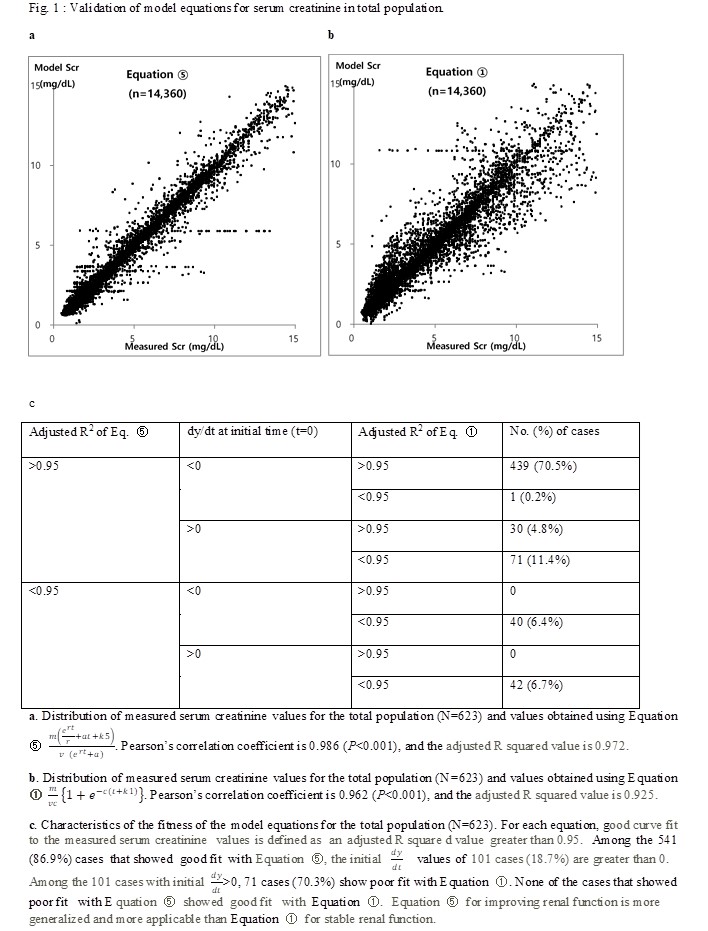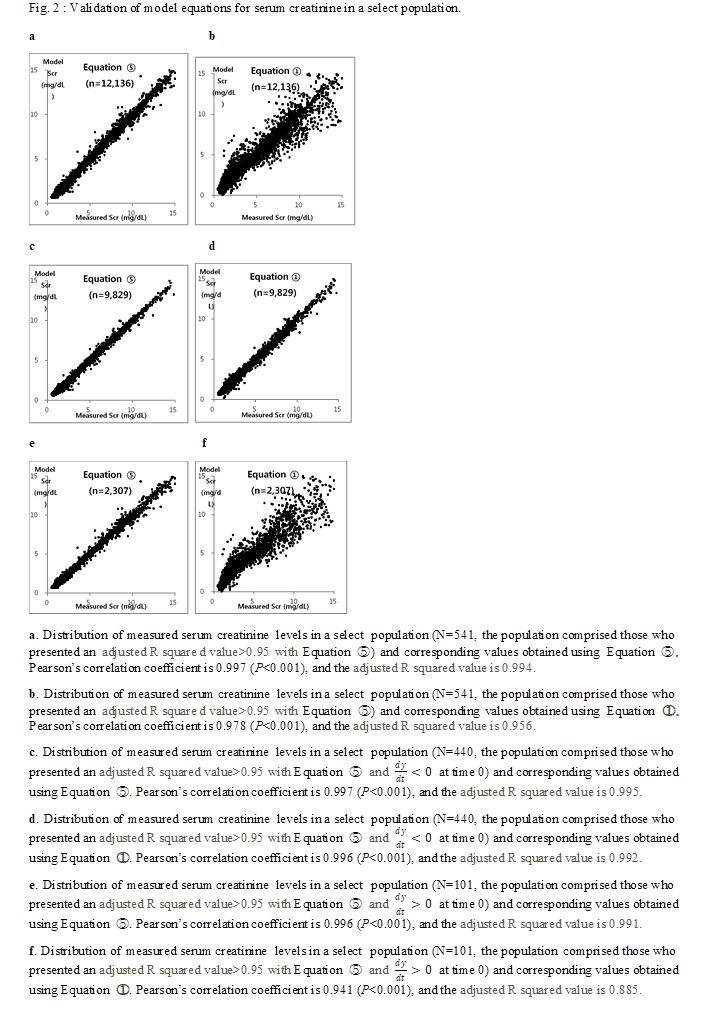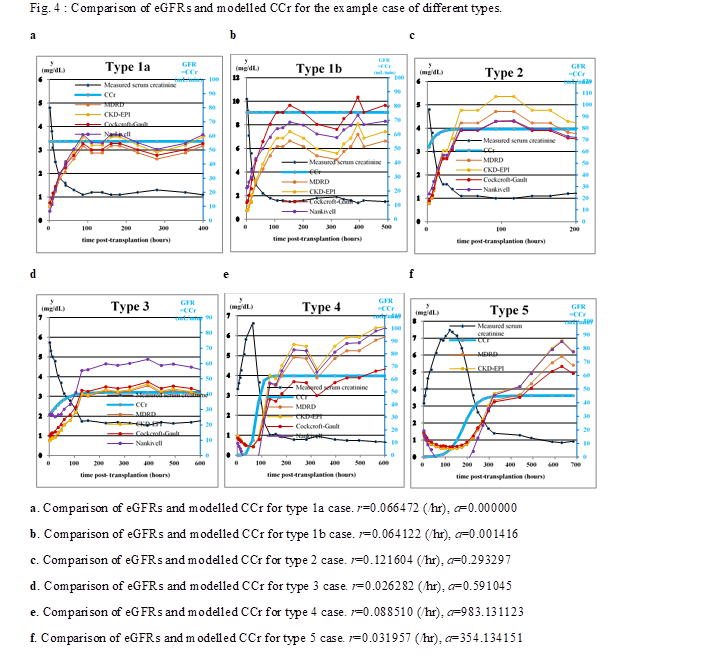Mathematical Model of Post-Transplant Serum Creatinine
Department of Transplant and Vascular Surgery, Ajou University Medical School, Suwon, Korea, Republic of
Meeting: 2019 American Transplant Congress
Abstract number: B273
Keywords: Glomerular filtration rate (GFR), Graft function, Kidney transplantation, Monitoring
Session Information
Session Name: Poster Session B: Kidney Living Donor: Quality and Selection
Session Type: Poster Session
Date: Sunday, June 2, 2019
Session Time: 6:00pm-7:00pm
 Presentation Time: 6:00pm-7:00pm
Presentation Time: 6:00pm-7:00pm
Location: Hall C & D
*Purpose: Commonly used equations calculating eGFR are not applicable when serum creatinine (Scr) is rapidly changing such as the post-transplant period. The purpose of this study is to develop a new mathematical model applicable to the post-transplant period, based on the fact that the change in the creatinine concentration equals the input substracted by the output of creatinine.
*Methods: All 623 patients who underwent kidney transplantation from Jan 2008 to June 2018 at a single institute were included to validate the mathematical equations for Scr, and 14,360 laboratory results for Scr from the time of re-perfusion to 30 days post-transplantation were analysed. The mathematical model derived from the initial basic equation was validated and compared with commoly used equations which calculate eGFR.
*Results: In validation of model equations, linear regression analysis yielded adjusted R squared values for equation ⑤ (applicable when renal function is changing) and equation ① (applicable when renal function is stable) of 0.972 and 0.925, respectively.
In selected cases (the population comprised those who presented an adjusted R squared value>0.95 with equation ⑤), a linear regression analysis showed that adjusted R squared values and Pearson’s correlation coefficients for equation ⑤ and equation ① were 0.994, 0.997 (P<0.001) and 0.956, 0.978(P<0.001), respectively.
In comparison between commonly used eGFRs and CCr by modelled equation, most of the eGFR fomulas are mathematically applicable only if the rate of creatinine input equals the rate of creatinine output (i.e., Scr reaches a plateau or a certain level).
*Conclusions: The proposed equations can be used to not only calculate the renal function at a certain time but also assess functional recovery after transplantation. Furthermore, these equations can be used to define and research delayed graft function.
To cite this abstract in AMA style:
Bae BJun, Chang-Kwon O. Mathematical Model of Post-Transplant Serum Creatinine [abstract]. Am J Transplant. 2019; 19 (suppl 3). https://atcmeetingabstracts.com/abstract/mathematical-model-of-post-transplant-serum-creatinine/. Accessed December 13, 2025.« Back to 2019 American Transplant Congress



